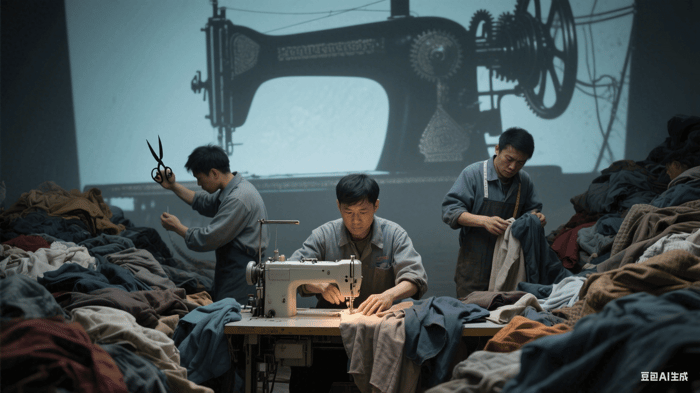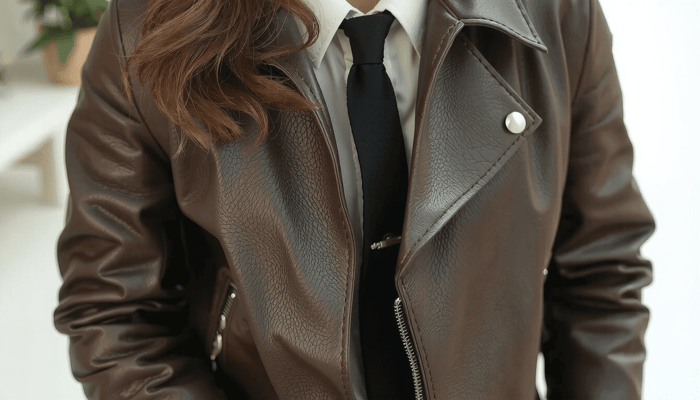When to Button a Suit Jacket: A Complete Guide for Every Style

 Mr. Eton Yip | 32+ Year Garment Manufacturing Expert & Founder of Eton Garment
Garment Industry
Mr. Eton Yip | 32+ Year Garment Manufacturing Expert & Founder of Eton Garment
Garment Industry
July 25th, 2025
10 minute read
Table of Contents
- The Core Rule on When to Button a Suit Jacket: Stand vs. Sit
- How Suit Construction Dictates When to Button a Suit Jacket
- The Nitty-Gritty: How and When to Button Every Type of Suit Jacket
- Beyond the Rules: Nuances and Exceptions
- Conclusion: Buttoning Up Your Confidence
- Frequently Asked Questions (FAQ)
- 1. Do the buttoning rules apply if I'm not wearing a tie?
- 2. What should I do if my suit jacket has only one button?
- 3. Is it ever okay to button the bottom button of a two or three-button suit?
- 4. I have a three-piece suit. Should I keep the jacket buttoned?
- 5. Do these rules apply to women's suit jackets as well?
- FAQs
Mastering when to button a suit jacket is not just a simple decision; it is an inseparable part of personal styling that shows confidence and mastery. For anyone wondering when to button a suit jacket, the general rule is easy: to get the best look, button your jacket when you stand up; unbutton it when you are sitting down. This single act separates a man who simply wears a suit from one who feels good and sophisticated in it.

This guide is your navigation tool, from traditional two-button styles to a formal double-breasted variant. By implementing these rules, you will ensure you are looking your best all the time. Understanding the details of when to button a suit jacket properly is essential for getting the most out of a quality garment, such as the expertly crafted pieces available at Eton Garment.
The Core Rule on When to Button a Suit Jacket: Stand vs. Sit
The best advice to remember when wearing a suit is this simple rhythm: stand and button, sit and unbutton. This is not a random rule. It is entirely based on the principles of good taste, comfort, and the preservation of your suit.
Why You Button When Standing
Following the proper etiquette for when to button a suit jacket while standing immediately refines your look.
- Buttoning the jacket creates a formal, tapered look. It cinches the waist, gives the illusion of broader shoulders, and creates a sharp V-shape at the torso that is good for all men.
- This will stop the jacket from flapping open. It can look uncontrolled and sloppy, particularly while walking or gesturing.
- In a professional or formal meeting, a buttoned jacket shows respect and attention to detail. It shows that you are present and engaged.
Why You Unbutton When Sitting
Unbuttoning before you sit is a crucial part of knowing when to button a suit jacket correctly. It benefits both you and your suit.
- Sitting with a jacket buttoned is simply uncomfortable. The fabric is pulled taut across your lap and chest, creating a restrictive feeling. This strain produces an unflattering "X" pattern of wrinkles radiating from the button.
- This tension places significant stress on the button and surrounding fabric, which can lead to damage over time.
- Unbuttoning allows the jacket to drape naturally at your sides. This prevents unsightly bunching and deep-set wrinkles. As experts at in his Image Photography point out, this practice is vital for preserving the suit's condition.
How Suit Construction Dictates When to Button a Suit Jacket
The rules for when to button a suit jacket are logical, deriving directly from the very tailoring of the suit. By understanding the "why," the "how" becomes intuitive. A well-tailored suit is a three-dimensional garment meant to fall in a particular way.
The Meaning of the Lapel Roll

A suit jacket's lapels are constructed to have a gentle, continuous "roll" from the collar down to the top button. This creates a graceful curve that adds depth and shape to the chest.
Buttoning the bottom button of a two- or three-button suit pulls this delicate roll flat and destroys the intended silhouette. The front of the jacket looks stiff and lifeless. The fastening point is supposed to be the anchor for this elegant drape.
The Cut of the Jacket's "Quarters"
In tailoring, the two front panels of the jacket below the waist button are called the "quarters." On modern suits, these panels are cut to curve away from each other below the fastening point.
This design creates a more open, flared shape. Fastening the bottom button forces these quarters together, closing a gap that was intentionally designed to be open and disrupting the jacket's lines.
The Old School Story: The King Edward VII Theory
A famous story illustrates the rationale for the "never the bottom button" rule. It's said that Britain's King Edward VII became too portly to fasten the bottom button of his jackets. Out of respect, the British court began leaving their bottom buttons undone as well. Whether true or not, it's a memorable tale that helps the rule stick.
The Nitty-Gritty: How and When to Button Every Type of Suit Jacket
While the "stand and button" rule is universal, the question of which buttons to use depends on your jacket's style. Here is your definitive guide for when to button a suit jacket, no matter the type.
For a quick reference, use this simple chart:
| Jacket Type | Top Button | Middle Button | Bottom Button |
|---|---|---|---|
| One-Button | Always (when standing) | N/A | N/A |
| Two-Button | Always (when standing) | N/A | Never |
| Three-Button | Sometimes | Always (when standing) | Never |
| Double-Breasted | Always (anchor + main) | Always | Sometimes (optional) |
The One-Button Suit Jacket

This style is clean, modern, and simple. The recommendation is clear: the button must be fastened when you are standing to maintain the jacket's sleek silhouette. Unbutton it before you sit down.
The Two-Button Suit Jacket
This is the most common and versatile suit jacket today. Knowing when to button a suit jacket of this type correctly is key for any modern professional.
The rule is to always use the top button and never the bottom one. As stated in these Suit Jacket Button Rules, modern suits are specifically cut with the lapel roll ending at the top button, making it the natural fastening point. The bottom button is purely for decoration.
The Three-Button Suit Jacket
The three-button suit, while less common now, has a classic mnemonic that makes it easy to remember. Just follow the "Sometimes, Always, Never" rule.
* Sometimes button the top button. It's optional and can create a more formal appearance.
* Always button the middle button when standing. This is the jacket's structural anchor.
* Never button the bottom button.
This easy-to-recall tip, popularized by style resources like Men's Suit Button Rules You Need To Know Now, is the gold standard.
The Double-Breasted Jacket
The double-breasted jacket is a more formal style with its own set of conventions. Its structure is designed to remain closed. As a rule, you should keep the main functioning buttons fastened, even when you sit down. Unbuttoning a double-breasted jacket makes it look voluminous and sloppy. Always fasten the inner "anchor" button to hold the jacket's shape. For the outer buttons, fasten all that have a corresponding buttonhole, though it is stylish to leave the bottom exterior button unfastened.
Beyond the Rules: Nuances and Exceptions

While the rules provide a great foundation, a truly stylish individual understands when to bend them. Knowing when to button a suit jacket also means knowing when not to.
For a Deliberate Fashion Statement
In some fashion-forward contexts, a man might purposely leave his single-breasted jacket unbuttoned while standing. This can project a relaxed or nonchalant vibe. The key is that this must look like a conscious choice, not an oversight.
What About Three-Piece Suits?
When you are wearing a waistcoat (vest) as part of a three-piece suit, the rules are altered. It is perfectly acceptable—and often preferred—to leave your suit jacket unbuttoned to show off the waistcoat. The waistcoat itself follows a similar rule: keep all buttons fastened except for the bottom one.
In Cold Weather
Practicality should sometimes override sartorial dogma. If you are outside on a genuinely cold and windy day, it is acceptable to button every button on your jacket, including the bottom one, for warmth. This is a temporary measure, not a style choice. Once indoors, revert to the standard rules.
Conclusion: Buttoning Up Your Confidence
Mastering when to button a suit jacket is a small detail that yields a significant impact. It elevates your entire presence and shows you are in command of your style.
Let's recap the main points: always button your jacket when you stand and unbutton it every time you sit. For single-breasted suits, remember the "never the bottom button" rule. With these rules, you will not only look polished but also feel confident. A properly fitted suit from a trusted maker like Eton Garment deserves to be worn with the knowledge these rules provide.
Frequently Asked Questions (FAQ)
1. Do the buttoning rules apply if I'm not wearing a tie?
Yes, absolutely. The rules for when to button a suit jacket are based on the jacket's cut and the situation, not on whether you're wearing a tie. A buttoned jacket provides a smart look even with an open-collar shirt.
2. What should I do if my suit jacket has only one button?
A one-button suit jacket makes it easy. The rule is to keep it buttoned when standing to maintain the suit's intended shape and unbutton it whenever you sit down for comfort.
3. Is it ever okay to button the bottom button of a two or three-button suit?
Generally, no. The guidelines on when to button a suit jacket are clear: the bottom button should remain undone for style and proper fit. The only practical exception is for momentary warmth in very cold weather.
4. I have a three-piece suit. Should I keep the jacket buttoned?
When wearing a waistcoat, you can leave your suit jacket unbuttoned to show it off. The waistcoat itself should be buttoned, except for the very bottom button. If you do choose to button the jacket, the standard rules apply.
5. Do these rules apply to women's suit jackets as well?
While the tradition originates in menswear, the principles of fit and comfort largely apply. The general guideline of unbuttoning when seated is a good practice for anyone. However, the specific rules for when to button a suit jacket are often more flexible in womenswear due to wider variations in cut.
FAQs
Sharing Success. Always.
Let’s build the future together. Join forces with Eton Group today and unlock cutting-edge manufacturing and supply chain solutions that not only drive innovation but also create lasting value, sustainable impact, and long-term success for your brand, your customers, and the generations to come.
Related Articles

From Pinhole to Tear: The Ultimate Guide on How to Fix a Hole in a Down Jacket
9 minute read
July 25th, 2025
This is a very sad thing. A lonely spark flies to your jacket. A thorn gets stuck in the fabric.... more »

The Definitive Manual: Which Items Are Suitable for a Black Jean Jacket?
11 minute read
July 25th, 2025
The black jean jacket is a true wardrobe staple. It is not just a piece of clothing but a... more »

Buying Letterman Jackets: Where to Find Them, the 2025 Guide
9 minute read
July 24th, 2025
Are you searching for a place to buy a letterman jacket? The four available options are: your official... more »

Jacket Factory: History, Operations & 2025 Trends
11 minute read
July 24th, 2025
Jacket Factory: History, Operations & 2025 TrendsUnderstanding Jacket Factories: History, Operations... more »

